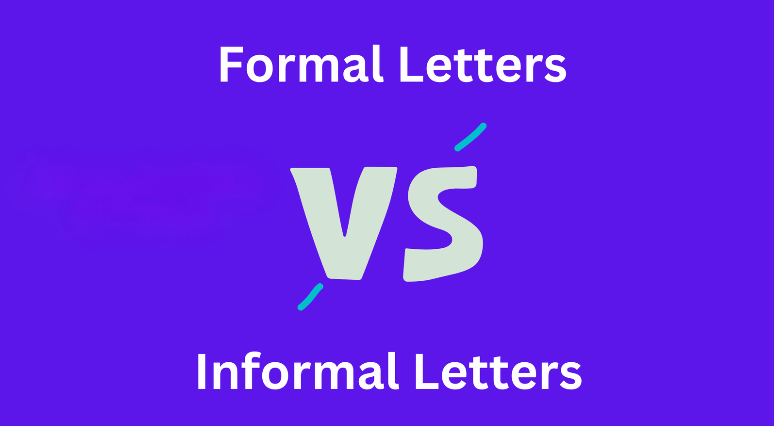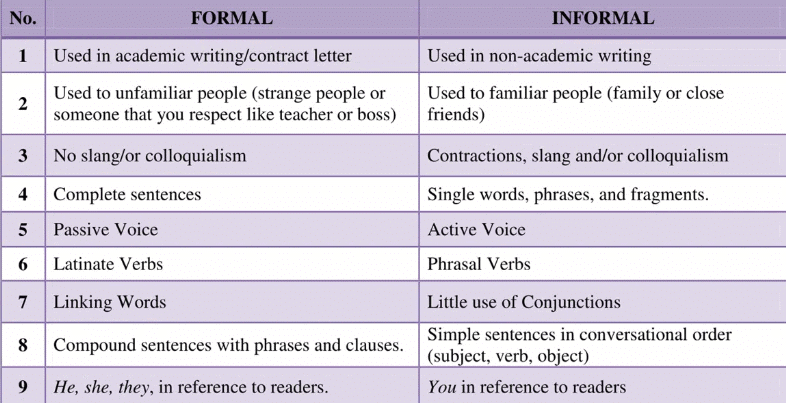Formal and Informal Letter | English Language Preparation for CUET UG PDF Download
Introduction
This guide helps you write formal and informal letters with clear steps and examples. Formal letters are professional, used for important matters like business, with a polite tone and strict format. Informal letters are casual notes to friends or family, allowing flexibility and personal style. They differ in tone, structure, and audience.

What is a Formal Letter?
A formal letter is something you write for serious or professional reasons, like sending it to a company, a school, or someone in charge. It’s got a polite tone, which means you use respectful words, and it’s set up in a neat, organized way with specific parts like addresses and a proper ending.
You’d use a formal letter when you’re applying for a job, making a complaint, or asking for something important, because it shows you mean business and want to be taken seriously.
Structure of a Formal Letter
Heading:
- Your address (top left)
- Date (below your address)
- Recipient’s address (below the date)
Salutation:
Start with "Dear Sir/Madam" (if you don’t know the name) or "Dear [Name]," (if you do).
Body:
- Introduction: Say why you’re writing (e.g., "I am writing to apply for…").
- Main Content: Give details, explain your request, or share information.
- Conclusion: End politely, like asking for a reply or thanking them.
Closing:
Write "Yours sincerely" (if you know the name) or "Yours faithfully" (if you don’t), then your signature and full name.
Example:
123 Main Street
City, State, ZIP
March 06, 2025
ABC Company
456 Business Road
City, State, ZIP
Dear Hiring Manager,
I am writing to apply for the Sales Assistant job posted on your website. I have two years of experience in sales and excellent customer service skills. Please let me know if you need more details. Thank you for your time.
Yours sincerely,
[Your Signature]
[Your Name]
What is an Informal Letter?
An informal letter is what you write to people you know well, like friends, family, or anyone you’re close to. It’s got a friendly, casual tone, so you can use everyday words and even slang if you want, and the setup doesn’t have to be strict—you can make it your own.
You’d write one to catch up with someone, invite them somewhere, or just say thanks for something, since it’s all about keeping things light and personal.
Structure of an Informal Letter
Heading:
Your address and date (optional, top left)
Salutation:
Start with "Hi [Name]," or "Dear [Nickname],".
Body:
- Greeting and Catch-Up: Say hi and ask how they’re doing.
- Main Message: Share your news, a story, or why you’re writing.
- Closing Remarks: End with something like "Write back soon!" or "See you later!"
Closing:
Write "Love," "Cheers," or "Take care," then your name.
Example:
10 Park Lane
City, State, ZIP
March 06, 2025
Hi Sam,
How are you? I just got back from a trip to the beach—it was so fun! The waves were huge, and I even tried surfing. What’s new with you? Write back when you can!
Take care,
Alex
Key Differences Between Formal and Informal Letter

Tips for Writing Effective Letters
Formal Tips:
- Keep it short and clear.
- Use polite words like "please" and "thank you."
- Check for spelling or grammar mistakes.
Informal Tips:
- Write like you talk—be yourself!
- Add fun details to make it interesting.
- Don’t worry too much about rules.
Conclusion
In the end, knowing how to write formal and informal letters is useful because it depends on why you’re writing and who’s going to read it. Formal letters are perfect for serious stuff where you need to be polite and clear, while informal ones let you have fun and connect with people you like. Both are easy once you get the hang of them, so give them a try—practice a little, and you’ll be writing great letters in no time!
|
72 videos|88 docs|92 tests
|
FAQs on Formal and Informal Letter - English Language Preparation for CUET UG
| 1. What are the key elements of a formal letter? |  |
| 2. When should I use an informal letter instead of a formal letter? |  |
| 3. What are the main differences between formal and informal letters? |  |
| 4. How can I make my letters more effective? |  |
| 5. Can you provide an example of a formal letter format? |  |





















